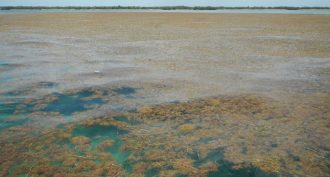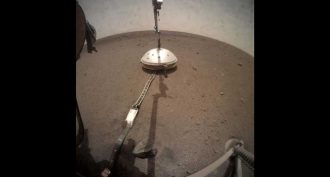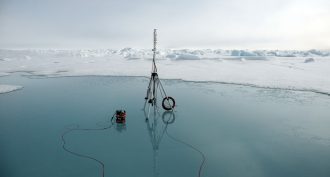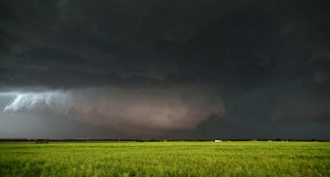
Carolyn Gramling
Earth & Climate Writer, Science News
Carolyn is the Earth & Climate writer at Science News. Previously she worked at Science magazine for six years, both as a reporter covering paleontology and polar science and as the editor of the news in brief section. Before that she was a reporter and editor at EARTH magazine. She has bachelor’s degrees in Geology and European History and a Ph.D. in marine geochemistry from MIT and the Woods Hole Oceanographic Institution. She’s also a former Science News intern.

All Stories by Carolyn Gramling
-
 Earth
EarthRecord seaweed belt spanned from Africa to Gulf of Mexico
Blooms of Sargassum seaweed used to form at the mouth of the Amazon River each year. In 2011, they mushroomed in size to where they now span from South America across to Africa.
-
 Animals
AnimalsA million species could vanish, and people are to blame
Human activities are putting a million plant and animal species at risk of extinction, a new study finds. But it’s not too late to save many of them, scientists add.
-
 Physics
PhysicsDry sand can bubble like the blobs in a lava lamp
Put two types of sand grains together in a chamber and they can flow like fluids. All it takes is a jiggle and some gas.
-
 Planets
PlanetsWas that a Marsquake?
‘Marsquakes’ could help scientists learn more about the Red Planet’s inner activity.
-
 Earth
EarthA million tiny quakes shook Southern California — and no one knew
By putting millions of tiny quakes on record, scientists hope to learn more about what triggers the big ones.
-
 Earth
EarthMicroplastics are blowing in the wind
Tiny pieces of plastic are traveling through the air, a new study shows. A remote mountaintop saw just as much plastic deposited per day as falls on downtown Paris.
-
 Fossils
FossilsPaleontologists find the first fossilized egg inside an ancient bird
For the first time, paleontologists have found an unlaid egg inside an ancient bird fossil. That egg may have caused its mother’s death.
-
 Oceans
OceansOceans’ fever means fewer fish
Warming oceans have caused fish populations to plummet since 1930. In some regions, the number of fish that can be caught without depleting populations has dropped by more than one-third.
-
 Climate
ClimateDisappearing sea ice could disrupt Arctic’s food web
When sea ice goes missing in the Arctic, every part of the ecosystem feels the effects.
-
 Earth
EarthEarth’s core may have hardened just in time to save planet’s magnetic field
Earth’s inner core began to solidify within the past 565 million years, a study finds. That could explain why the planet’s magnetic field did not collapse.
-
 Fossils
FossilsThis robot shows how an ancient creature might have walked
Scientists used fossils, footprints, a computer models and a life-sized walking robot to find out how an ancient creature moved.
-
 Climate
ClimateNew research may alter what we know about how tornadoes form
New data suggest that the twisters don’t form from the top down.